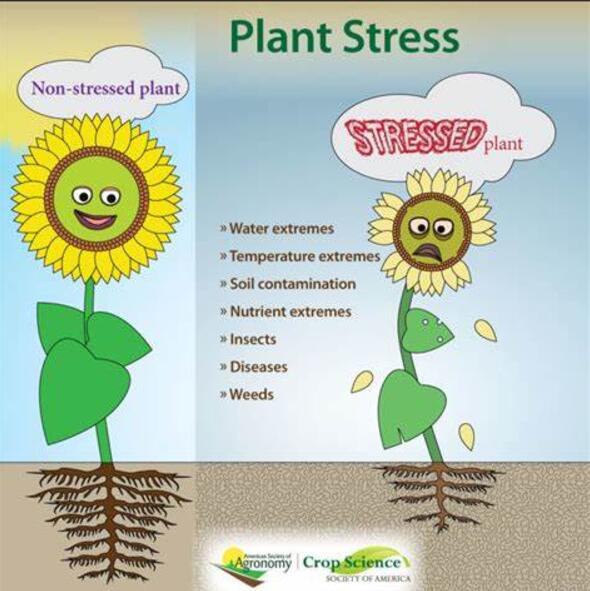Thirsty, soaked, and thriving: Maize morpho-physiological and biochemical responses to sequential drought, waterlogging, and re-drying
IF 6.8
Q1 PLANT SCIENCES
引用次数: 0
Abstract
Maize (Zea mays), a pivotal cereal crop, frequently encounters sequential abiotic stresses—drought, waterlogging, and re-drought—that impose multifaceted and interlinked constraints on its growth and productivity. This study elucidates the specific impacts of these sequential stress events on maize morphology, physiology, and biochemistry, offering critical insights into the crop's adaptive capacities and limitations. Drought stress elicited severe morphological alterations, including pronounced leaf curling, significant reductions in leaf area, and inhibited shoot elongation, collectively undermining photosynthetic efficiency. Root systems exhibited marked shallowness and sparsity, substantially restricting water and nutrient uptake. Photosynthetic pigment degradation, particularly of chlorophyll and carotenoids, was acute, accompanied by diminished CO2 assimilation and elevated leaf temperatures, which likely exacerbated oxidative stress through reactive oxygen species (ROS) overproduction. Waterlogging stress following drought, although alleviating some drought-induced damage, introduced oxygen deprivation in the rhizosphere, leading to disrupted root respiration, necrosis, and impaired nutrient acquisition. Adaptive responses, such as partial recovery of photosynthetic pigments, improved water balance, and reduced oxidative stress; however, metabolic recovery remained incomplete, with stunted growth and persistent root biomass loss. Re-drought stress followed by pre-drought and waterlogging imposed the most catastrophic effects, characterized by pervasive leaf necrosis, pronounced shoot and root stunting, and a systemic collapse in biomass accumulation. The re-drought phase was marked by escalated ROS levels, membrane destabilization, and the overwhelming failure of antioxidative defenses, culminating in metabolic dysfunction and structural disintegration. These findings underscore the urgent necessity for targeted breeding strategies to optimize root system architecture, fortify antioxidative defense mechanisms, and enhance osmoprotectant synthesis. Integrative multi-omics approaches and comparative studies across diverse maize genotypes are imperative to unravel the genetic and molecular underpinnings of stress resilience.
求助全文
约1分钟内获得全文
求助全文
来源期刊

Plant Stress
PLANT SCIENCES-
CiteScore
5.20
自引率
8.00%
发文量
76
审稿时长
63 days
期刊介绍:
The journal Plant Stress deals with plant (or other photoautotrophs, such as algae, cyanobacteria and lichens) responses to abiotic and biotic stress factors that can result in limited growth and productivity. Such responses can be analyzed and described at a physiological, biochemical and molecular level. Experimental approaches/technologies aiming to improve growth and productivity with a potential for downstream validation under stress conditions will also be considered. Both fundamental and applied research manuscripts are welcome, provided that clear mechanistic hypotheses are made and descriptive approaches are avoided. In addition, high-quality review articles will also be considered, provided they follow a critical approach and stimulate thought for future research avenues.
Plant Stress welcomes high-quality manuscripts related (but not limited) to interactions between plants and:
Lack of water (drought) and excess (flooding),
Salinity stress,
Elevated temperature and/or low temperature (chilling and freezing),
Hypoxia and/or anoxia,
Mineral nutrient excess and/or deficiency,
Heavy metals and/or metalloids,
Plant priming (chemical, biological, physiological, nanomaterial, biostimulant) approaches for improved stress protection,
Viral, phytoplasma, bacterial and fungal plant-pathogen interactions.
The journal welcomes basic and applied research articles, as well as review articles and short communications. All submitted manuscripts will be subject to a thorough peer-reviewing process.
 求助内容:
求助内容: 应助结果提醒方式:
应助结果提醒方式:


